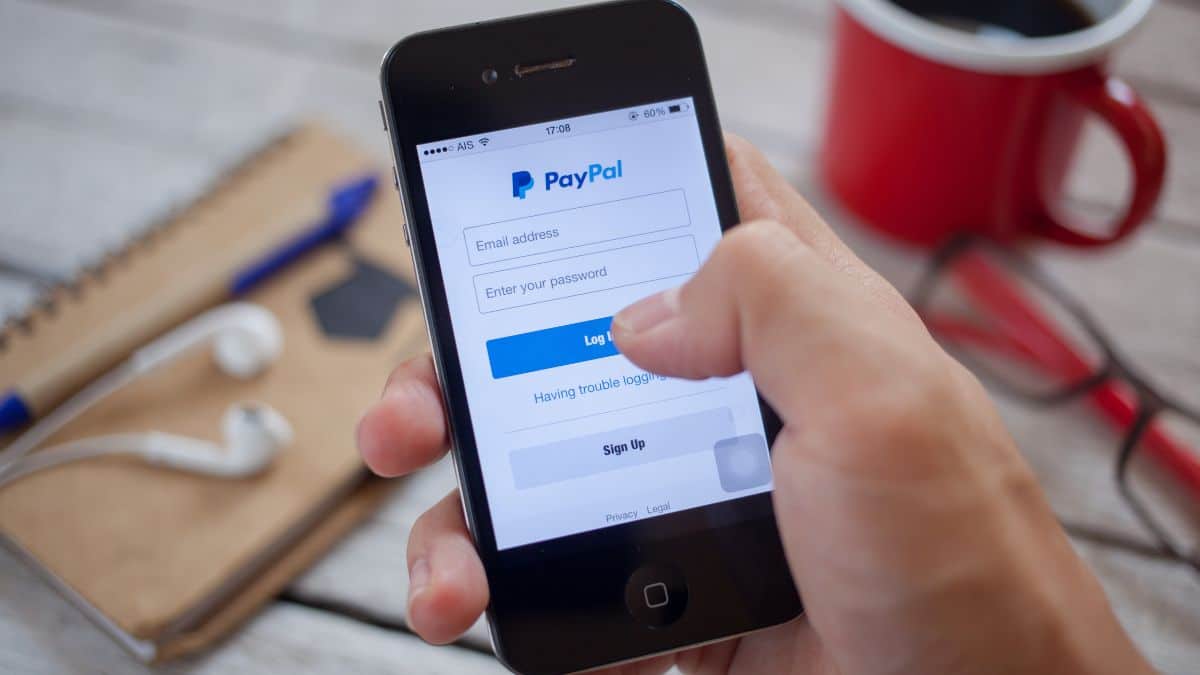Introduction
Welcome to the world of online entrepreneurship! If you have a passion for writing and want to share your knowledge with others, selling an eBook is a fantastic way to turn your expertise into a profitable venture. With Shopify, one of the leading e-commerce platforms, you can easily set up an online store and start selling your eBook directly to customers.
Whether you’re an aspiring author, a blogger with a loyal following, or a subject matter expert looking to monetize your expertise, Shopify provides a user-friendly platform that empowers you to showcase, sell, and distribute your eBook to a global audience. With its robust features and customizable options, you can create a compelling eBook sales page, securely deliver your digital product, and manage your sales with ease.
In this comprehensive guide, we will walk you through the step-by-step process of selling your eBook on Shopify. From setting up your store to marketing and promoting your product, we’ll cover all the essential steps to help you successfully sell your eBook and turn your passion into profit.
So grab your laptop, unleash your creativity, and let’s dive into the exciting world of eBook selling on Shopify!
Step 1: Set up a Shopify Store
Before you can start selling your eBook on Shopify, you’ll need to set up your online store. Don’t worry – Shopify makes this process quick and straightforward. Here’s what you need to do:
1. Sign up for Shopify: Visit the Shopify website and click on the “Get Started” button. Enter your email address, password, and store name to create your account. You’ll receive a confirmation email with additional instructions.
2. Customize your store: Once you’ve signed up, you’ll be directed to your Shopify dashboard. Take some time to explore the various customization options available to you. Choose a visually appealing theme, tweak the colors and fonts, and add your logo to reflect your brand.
3. Configure your settings: Navigate to the “Settings” tab on your dashboard and fill in the essential information about your store. This includes your store name, address, payment preferences, and shipping options. Ensure that all the details are accurate and complete.
4. Choose a domain name: Shopify provides you with a temporary domain name (yourstorename.myshopify.com), but it’s highly recommended to have a custom domain. You can purchase one through Shopify or use an existing domain that you own. A custom domain adds professionalism and credibility to your online store.
5. Set up payment gateways: To sell your eBook, you’ll need to enable payment gateways that allow your customers to securely make purchases. Shopify offers a range of payment options, including Shopify Payments, PayPal, Stripe, and more. Select the payment gateways that best suit your needs and follow the setup instructions.
6. Set up shipping: If you’re selling a physical copy of your eBook or offering additional merchandise, you’ll need to configure your shipping settings. Specify the regions you ship to, the shipping rates, and any shipping discounts you might want to offer.
Once you’ve completed these steps, you’ll have a fully functional Shopify store ready to showcase and sell your eBook. In the next step, we’ll explore how to create your eBook product and prepare it for sale on Shopify.
Step 2: Create an eBook Product
Now that your Shopify store is up and running, it’s time to create your eBook product. Follow these steps to get your digital product ready for sale:
1. Navigate to the Products tab: From your Shopify dashboard, click on the “Products” tab located on the left-hand side of the screen. Then, click on the “Add product” button.
2. Add the eBook details: Enter the title, description, and other relevant details about your eBook. Be sure to write a compelling description that highlights the value and benefits of your eBook to potential customers.
3. Upload a high-quality cover image: Choose an eye-catching cover image that visually represents your eBook. Make sure the image is of high resolution and visually appealing to capture the attention of potential buyers.
4. Set a price: Determine the price for your eBook. Consider factors such as the length, depth of information, and market demand. You can also offer a discounted price or create price tiers depending on your marketing strategy.
5. Create product variants (if applicable): If you’re offering different formats or versions of your eBook, such as a PDF and an ePub version, create product variants to cater to customer preferences.
6. Assign tags and collections: Tags and collections help organize your products and make it easier for customers to find specific eBooks. Use relevant keywords as tags and place your eBook in relevant collections to enhance discoverability.
7. Set inventory tracking: If you’re selling a limited number of eBooks or want to keep track of inventory, enable inventory tracking. This will ensure that you don’t oversell and disappoint customers.
8. Save your product: Once you’ve filled in all the necessary details, click the “Save” or “Publish” button to make your eBook product live on your store.
That’s it! You’ve now created a captivating eBook product ready to be sold on your Shopify store. In the next step, we’ll explore how to customize the details of your eBook product to engage customers and drive sales.
Step 3: Customize Product Details
Once you’ve created your eBook product on Shopify, it’s essential to customize its details to make it attractive and compelling to potential buyers. Follow these steps to make your eBook product stand out:
1. Edit the product description: Ensure that your product description accurately conveys the value and benefits of your eBook. Highlight key features and include persuasive language that entices readers to make a purchase.
2. Formatting and styling: Use formatting options available in Shopify’s text editor to enhance the readability and visual appeal of your product description. Utilize headings, lists, bold text, and italics to make important details stand out.
3. Add customer reviews/testimonials: If you already have satisfied customers who have provided positive feedback about your eBook, consider showcasing their testimonials on the product page. Social proof can greatly influence potential buyers’ decision-making process.
4. Include an author bio: Briefly introduce yourself as the author of the eBook. Share relevant information about your qualifications and expertise in the topic to build trust and credibility with potential buyers.
5. Provide a table of contents: If your eBook has multiple chapters or sections, consider providing a table of contents in the description. This gives potential buyers an overview of the topics covered and adds clarity to what they can expect from your eBook.
6. Mention any bonus materials: If you’re offering any additional resources, worksheets, or bonus material along with your eBook, make sure to mention these in the product description. This can increase the perceived value of your eBook and entice buyers.
7. Optimize for search engines: Include relevant keywords in your product description to increase its visibility in search engine results. Conduct keyword research to identify terms that potential buyers are likely to search for when looking for eBooks in your niche.
8. Preview or sample chapters: Consider providing a preview or sample chapters of your eBook so that potential buyers can get a glimpse of the content. This can help them make an informed decision and increase their confidence in purchasing the full eBook.
By customizing the details of your eBook product, you can enhance its appeal and increase the likelihood of making sales. However, remember to strike a balance between providing informative and persuasive details without overwhelming the potential buyers. In the next step, we’ll explore how to upload the eBook file and make it available for download to customers.
Step 4: Upload the eBook File
Once you have customized the details of your eBook product on Shopify, it’s time to upload the eBook file so that customers can easily access and download it. Follow these steps to upload your eBook file:
1. Access the product details: From your Shopify dashboard, go to the “Products” tab and click on the eBook product you want to upload the file for.
2. Scroll down to the “Files” section: In the product details page, locate the “Files” section. This is where you’ll be able to upload and manage your eBook file.
3. Click on “Upload files”: Under the “Files” section, click on the “Upload files” button. This will open a file upload dialog box.
4. Select your eBook file: In the file upload dialog box, browse your computer’s folders to find and select your eBook file. It’s recommended to upload the file in a universal format like PDF or ePub to ensure compatibility across different devices.
5. Upload the file: Once you’ve selected the eBook file, click on the “Upload” button to initiate the file upload process. Depending on the file size, it may take a few moments to complete.
6. Assign the file to the product: After the file upload is complete, you’ll see the uploaded eBook file listed under the “Files” section. Check the box next to the file name to assign it to the eBook product you’re working on.
7. Save the changes: Scroll to the bottom of the page and click on the “Save” or “Save product” button to save the changes and make the eBook file accessible to customers.
By uploading the eBook file to the product, you ensure that customers who purchase your eBook can easily download it after completing their purchase. With your eBook file added to the product, you’re now one step closer to selling your digital product on your Shopify store. In the next step, we’ll explore how to choose pricing and sales options for your eBook to maximize your sales potential.
Step 5: Choose Pricing and Sales Options
Now that your eBook file is uploaded, it’s time to determine the pricing and sales options for your eBook product on Shopify. Consider these steps to set the right price and provide a seamless buying experience for your customers:
1. Set the eBook price: Determine the price for your eBook that reflects its value and aligns with market expectations. Take into account factors like the length, quality, and demand for your eBook. You can either set a fixed price or offer multiple pricing tiers, such as a basic edition and a premium edition with additional content.
2. Offer discounts or promotions: Consider running special promotions or offering discounts for limited periods to incentivize customers to make a purchase. Shopify allows you to create discount codes or apply automatic discounts, which can attract and convert potential buyers.
3. Provide bundle options: If you have multiple eBooks or additional digital products related to your main eBook, consider offering bundle deals. This can encourage customers to purchase more than one eBook or digital product from your store, increasing your sales volume.
4. Set up pre-orders (if applicable): If you’re launching a new eBook, you can generate excitement and gain early sales by offering pre-orders. This allows customers to purchase the eBook before its official release date, maximizing anticipation and boosting sales.
5. Enable customer reviews: Enable customer reviews for your eBook product to build social proof and credibility. Positive reviews and ratings can influence potential buyers, helping them make a purchasing decision with confidence.
6. Consider alternate sales options: Besides selling your eBook as a stand-alone product, think about offering additional formats or packages. For example, you can provide a bundle with both a digital and physical copy of the eBook or offer a subscription model for ongoing access to exclusive content.
7. Test and adjust pricing: Monitor your sales and customer feedback to analyze the effectiveness of your pricing strategy. If you’re not achieving your desired sales volume or if customers express concerns about the price, be open to adjusting your pricing to find the sweet spot that maximizes both sales and profitability.
By carefully choosing the pricing and sales options for your eBook, you can attract more potential buyers and optimize your revenue generation. Experiment with different strategies and pricing models to find what works best for your target audience and eBook niche. In the next step, we’ll explore how to enable digital downloads for your eBook on Shopify.
Step 6: Enable Digital Downloads
Now that you’ve determined the pricing and sales options for your eBook on Shopify, it’s time to enable digital downloads so that customers can easily access and enjoy their purchase. Follow these steps to enable digital downloads for your eBook:
1. Access the product details: From your Shopify dashboard, go to the “Products” tab and click on the eBook product you want to enable digital downloads for.
2. Scroll down to the “Files” section: In the product details page, locate the “Files” section. This is where you uploaded the eBook file in the previous step.
3. Check the “Digital product” box: Within the “Files” section, check the box next to “Digital product.” This tells Shopify that this product is a digital download and triggers the necessary settings.
4. Limit download attempts (optional): If you want to restrict the number of times customers can download the eBook, you can set a limit in the “Download attempts” field. This prevents abuse or unauthorized sharing of the file.
5. Customizable download instructions: Provide instructions or guidance on how customers can access their download link after purchase. You can use the “Download instructions” field to specify steps for downloading and accessing the eBook file.
6. Save the changes: Scroll to the bottom of the page and click on the “Save” or “Save product” button to save the changes and enable digital downloads for the eBook product.
By enabling digital downloads, you’re ensuring that customers can conveniently access their purchased eBook immediately after completing their purchase. This enhances the user experience and reduces any potential barriers to accessing the content. Additionally, since the file is securely stored within Shopify, you don’t have to worry about manually sending files or managing individual download links for each customer.
Now that you’ve successfully enabled digital downloads for your eBook, your customers can enjoy instant access to the knowledge and content you’ve created. In the next step, we’ll explore how to add a payment gateway to your Shopify store, allowing customers to securely make purchases.
Step 7: Add a Payment Gateway
Adding a payment gateway to your Shopify store is crucial in facilitating secure and seamless transactions for your eBook sales. Follow these steps to add a payment gateway:
1. Access the Payment Providers settings: From your Shopify dashboard, navigate to the “Settings” tab and select “Payment Providers.”
2. Choose a payment gateway: Shopify offers a wide range of payment gateways, including Shopify Payments, PayPal, Stripe, and more. Review the available options and select the one that best suits your needs.
3. Set up your chosen payment gateway: Follow the specific instructions provided by your selected payment gateway to complete the setup process. This typically involves providing necessary information such as your bank account details or merchant account credentials.
4. Configure payment settings: Customize the payment settings according to your preferences. You can choose currency options, set up automatic transfers, or configure additional security measures, such as enabling fraud detection services.
5. Test your payment gateway: It’s essential to thoroughly test your payment gateway to ensure that it functions correctly. Make a test purchase using a real or sandbox account to verify that transactions are processed smoothly and that funds are deposited correctly.
6. Save the changes: Once you have completed the setup and configuration process, click on the “Save” or “Save changes” button to update your payment settings.
By adding a payment gateway, you provide your customers with secure and convenient payment options, increasing their trust and confidence in making a purchase. Ensuring a smooth and seamless payment process is essential for optimizing your eBook sales and providing a positive buying experience.
Now that you’ve successfully added a payment gateway to your Shopify store, you’re ready to securely process customer transactions. In the next step, we’ll explore how to configure settings for eBook delivery to ensure a smooth delivery process for your customers.
Step 8: Configure Settings for eBook Delivery
Configuring the settings for eBook delivery is crucial to ensure a smooth and automated process of delivering the purchased eBooks to your customers. Follow these steps to configure the settings for eBook delivery on Shopify:
1. Access the Digital Downloads settings: From your Shopify dashboard, navigate to the “Settings” tab and select “Checkout.”
2. Scroll down to the “Order processing” section: In the order processing section, locate the “Email notifications” subsection.
3. Enable the “Digital download email” notification: Check the box next to the “Digital download email” notification to enable it. This ensures that customers receive an automated email with instructions and a download link for their purchased eBook.
4. Customize the email notification: Personalize the content of the digital download email to provide clear instructions on how customers can access and download their eBook. You can include the download link, any additional instructions, and contact information for customer support if needed.
5. Preview the email notification: It’s a good practice to review and test the digital download email before it is sent to customers. Shopify provides a preview option that allows you to see how the email will appear to recipients.
6. Save the changes: Once you are satisfied with the settings and customization of the digital download email notification, click on the “Save” or “Save changes” button to apply the changes.
By configuring the settings for eBook delivery, you ensure that your customers receive their purchased eBooks promptly and without any manual intervention. The automated process enhances the customer experience and allows you to focus on other aspects of your eBook business.
Now that you’ve successfully set up the settings for eBook delivery, your customers will receive automated emails containing the necessary information to access and download their eBooks. In the next step, we’ll explore how to customize your eBook sales page to make a compelling impression on potential buyers.
Step 9: Customize Your eBook Sales Page
Your eBook sales page is critical in creating a compelling impression on potential buyers and convincing them to make a purchase. Here are the steps to customize your eBook sales page on Shopify:
1. Access the product details: From your Shopify dashboard, go to the “Products” tab and select the eBook product you want to customize.
2. Edit the product details: Review and edit the product description, title, and other relevant information to ensure it accurately presents the value and benefits of your eBook. Use descriptive and persuasive language to capture the attention of potential buyers.
3. Customize the layout and design: Shopify allows you to fully customize the layout and design of your sales page. Choose a visually appealing theme that aligns with your brand. Customize colors, fonts, and other elements to create a cohesive and attractive page.
4. Add multimedia elements: Enhance your eBook sales page by incorporating multimedia elements. You can include images, videos, or audio clips that are relevant to your eBook content and help engage potential buyers.
5. Provide a sample or preview: Consider offering a sample or preview of your eBook on the sales page. This allows potential buyers to get a glimpse of the content and quality, helping them make an informed decision to purchase.
6. Highlight key features and benefits: Clearly communicate the key features and benefits of your eBook. Showcase what sets it apart from others in your niche and demonstrate how it can help readers solve a problem or achieve their goals.
7. Include testimonials or reviews: Display customer testimonials or reviews on your sales page to build credibility and trust. Reviews from satisfied customers can be a powerful persuasion tool for potential buyers.
8. Create a sense of urgency: Utilize urgency-inducing elements such as limited-time offers, countdown timers, or scarcity statements to motivate potential buyers to take action and make a purchase.
9. Optimize for mobile devices: Ensure that your sales page is mobile-friendly and responsive, as many customers will browse and make purchases using their mobile devices. Test your sales page on different devices to ensure a smooth and engaging user experience.
10. Save and preview: Once you have customized your eBook sales page, save your changes and preview the page to see how it will appear to potential buyers. Make any necessary adjustments to ensure a visually appealing and persuasive sales page.
By customizing your eBook sales page, you create a visually appealing and compelling presentation that convinces potential buyers to make a purchase. A well-designed sales page enhances the perceived value of your eBook and increases the likelihood of conversion. In the next step, we’ll explore how to market and promote your eBook to reach a wider audience and increase your chances of making sales.
Step 10: Market and Promote Your eBook
Once you’ve customized your eBook sales page and set up your Shopify store, it’s time to focus on marketing and promoting your eBook to reach a wider audience. Here are some strategies to effectively market and promote your eBook:
1. Create a comprehensive marketing plan: Develop a detailed marketing plan that outlines your target audience, key promotional channels, and specific tactics to reach your audience. Identify your unique selling points and craft compelling messaging to differentiate your eBook from competitors.
2. Leverage social media platforms: Utilize popular social media platforms such as Facebook, Instagram, Twitter, and LinkedIn to connect with your target audience and promote your eBook. Create engaging content, share teasers or snippets from the eBook, and encourage followers to share your posts.
3. Build an email list: Create a dedicated landing page or opt-in form on your website to capture email addresses of interested readers. Send regular newsletters, updates, and exclusive content to your email subscribers to keep them engaged and informed about your eBook.
4. Engage with your target audience: Participate in relevant online communities, forums, and groups where your target audience is active. Provide valuable insights and establish yourself as an expert in your niche. Engage in conversations, answer questions, and strategically promote your eBook when appropriate.
5. Collaborate with influencers: Identify influential bloggers, content creators, or industry experts in your niche and collaborate with them to promote your eBook. Offer them a complimentary copy or propose guest blogging opportunities, podcast interviews, or joint promotional campaigns to expand your reach.
6. Offer limited-time promotions or discounts: Create a sense of urgency by offering limited-time promotions or discounts for your eBook. Run flash sales, bundle offers, or provide value-add incentives to encourage potential buyers to make a purchase sooner rather than later.
7. Leverage content marketing: Create valuable and informative content related to your eBook’s topic and distribute it through your blog, guest blogging, or article submission platforms. Include a call-to-action within the content to direct readers to your eBook sales page.
8. Seek organic and paid advertising opportunities: Explore advertising options that align with your target audience, such as Google AdWords, social media advertising, or niche-specific websites. Monitor and optimize your campaigns to maximize their effectiveness.
9. Encourage user-generated content: Encourage readers who have purchased and benefited from your eBook to share their experiences through reviews, testimonials, or user-generated content. Offer incentives, such as exclusive access to future content, to motivate and reward them.
10. Monitor analytics and iterate: Constantly track and analyze the performance of your marketing efforts. Monitor website traffic, conversion rates, and engagement metrics to identify what’s working and what needs improvement. Continuously refine your marketing strategies based on the data collected.
By implementing effective marketing and promotional strategies, you can expand the reach of your eBook, attract a larger audience, and increase your chances of making sales. Remember to be persistent, adapt to market trends, and engage with your audience to build strong relationships and a loyal readership.
Conclusion
Congratulations! You’ve reached the end of this comprehensive guide on how to sell your eBook on Shopify. By following the ten steps outlined in this guide, you’ve learned how to set up your Shopify store, create and customize your eBook product, enable digital downloads, configure payment gateways, and market your eBook to a wider audience. Armed with this knowledge, you’re well-equipped to embark on your journey as a successful eBook seller.
Remember, building a successful eBook business takes time, effort, and ongoing dedication. Continuously refine your marketing strategies, engage with your audience, and monitor data and analytics to make data-driven decisions. Stay motivated, adapt to industry trends, and consistently improve the quality of your eBook and customer experience to stand out in the competitive market.
As you navigate through this journey, don’t forget to continuously educate yourself on industry best practices and keep up with changes in the e-commerce and digital publishing landscape. Embrace new technologies, experiment with different tactics, and always strive to provide exceptional value to your customers.
So, what are you waiting for? Put your knowledge into action and start selling your eBook on Shopify today. Embrace the entrepreneurial spirit, showcase your expertise, and share your valuable knowledge with a global audience. With determination and perseverance, you can turn your passion for writing into a profitable venture. Good luck!

























